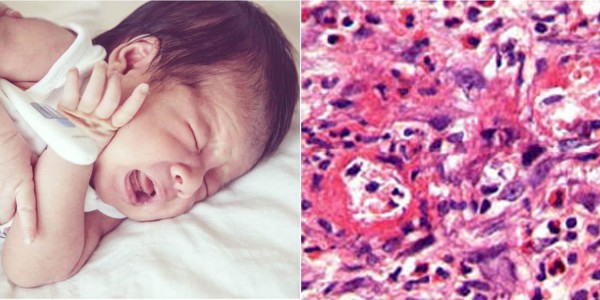
BALTIMORE - A new study identifies antigens targeted by the antibody response of children with Kawasaki Disease (KD). Findings will be presented during the Pediatric Academic Societies (PAS) 2019 Meeting, taking place on April 24 - May 1 in Baltimore.
"To identify antigens targeted by the antibody response of children with KD, we identified plasmablasts that were clonally expanded in the peripheral blood of 11 children with KD and made monoclonal antibodies from these plasmablasts," said Anne Rowley, MD, one of the authors of the study. "Monoclonal antibodies from nine of the 11 patients identified intracytoplasmic inclusion bodies in ciliated bronchial epithelium of fatal KD cases. A subset of these antibodies recognizes peptides from a hepacivirus non-structural protein, and an optimized peptide blocked binding of these antibodies to the inclusion bodies, demonstrating the presence of a hepacivirus-like protein in the inclusion bodies. These results strongly suggest that a new human virus, closely related to the hepaciviruses and with a respiratory portal of entry, is etiologically related to KD."
The study isolated peripheral blood (PB) from KD children 1-3 weeks after fever onset, and characterized the response using single cell RT-PCR. It identified oligoclonal PB sets and highly mutated IgA PB, and generated monoclonal antibodies from these PB. It used the monoclonal antibodies to evaluate reactivity to KD tissues and to a peptide array comprising 29,939 peptides derived from 13,123 B cell epitopes of animal viruses reported in the Immune Epitope Database and Analysis Resource.
The study sequenced 1,156 PB from 11 KD patients, and identified 44 sets of oligoclonal PB in these patients. It prepared 61 monoclonal antibodies (Mab) from oligoclonal PB and from IgA PB that showed high levels of somatic mutation. Ten of these antibodies strongly bind to KD ICI, and 23 weakly bind. Animal virus peptide array revealed that Mab KD4-2H4 (from patient KD4), which strongly binds ICI, recognized multiple similar peptides from a nonstructural protein of hepacivirus C with an identified motif that was highly significant at e-118. Patient KD4 had negative hepatitis C serology. Peptide substitution analysis was performed to identify optimal amino acids for binding of KD4-2H4 at each position. ELISA using an optimized peptide revealed that four other KD Mab from two additional KD patients also recognized this peptide; all three patients had coronary aneurysms. The strong ICI binding of KD Mabs KD4- 2H4 and KD6-2B2 was completely blocked by pre-incubation with the optimized peptide.
Children with KD make antibodies to hepacivirus peptides, and KD ICI contain protein with a hepacivirus-like epitope. These results strongly suggest that a new human virus, closely related to the hepaciviruses and with a respiratory portal of entry, is etiologically related to KD. Identification of the specific etiology of KD could revolutionize KD diagnosis and treatment in the future.
Dr. Rowley will present findings from "Monoclonal Antibodies from Children with Kawasaki Disease (KD) Recognize Hepacivirus Peptides" on Monday, April 29 at 2 p.m. EDT. Reporters interested in an interview with Dr. Rowley should contact PAS2019@piercom.com. Please note that only the abstracts are being presented at the meeting. In some cases, the researchers may have additional data to share with media.
The PAS 2019 Meeting brings together thousands of pediatricians and other health care providers to improve the health and well-being of children worldwide. For more information about the PAS 2019 Meeting, please visit http://www.pas-meeting.org.

